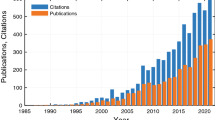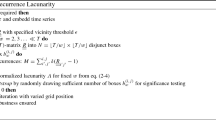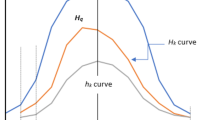Abstract
In the recent literature on time representation, an effort has been made to characterize the notion of time granularity and the relationships between granularities. The main goals are having a common framework for their specification, and allowing the interoperability of systems adopting different time granularities. This paper considers the mathematical characterization of finite and periodic time granularities, and investigates the requirements for a user-friendly symbolic formalism that could be used for their specification. Instead of proposing yet another formalism, the paper analyzes the expressiveness of known symbolic formalisms for the representation of granularities, using the mathematical characterization as a reference model. Based on this analysis, a significant extension to the collection formalism defined in [15] is proposed, in order to capture a practically interesting class of periodic granularities.
Similar content being viewed by others
References
J.F. Allen, Maintaining knowledge about temporal intervals, Communications of the ACM 26(11) (1983) 832-843.
E. Bertino, C. Bettini, E. Ferrari and P. Samarati, An access control model supporting periodicity constraints and temporal reasoning, ACM Transactions on Database Systems 23(3) (1998) 231-285.
C. Bettini, X. Wang and S. Jajodia, A general framework for time granularity and its application to temporal reasoning, Annals of Mathematics and Artificial Intelligence, 22(1,2) (1998) 29-58. A preliminary version appeared in Proc. of TIME-96.
C. Bettini, C.E. Dyreson, W.S. Evans, R.T. Snodgrass and X.S. Wang, A glossary of time granularity concepts, in: Temporal Databases: Research and Practice, eds. O. Etzion, S. Jajodia and S. Sripada, Lecture Notes in Computer Science, Vol. 1399, pp. 406-413 (Springer, 1998).
C. Bettini, S. Jajodia and X.S. Wang, Time Granularities in Databases, Data Mining, and Temporal Reasoning (Springer, 2000).
F. Casati, B. Pernici, G. Pozzi, G. Sanchez and J. Vonk, Conceptual workflow model, in: Database Support for Workflow Management: The WIDE Project (Kluwer, 2000) chapter 3.
R. Chandra, A. Segev and M. Stonebraker, Implementing calendars and temporal rules in next generation databases, in: Proc. of ICDE (1994) pp. 264-273.
D. Cukierman and J. Delgrande, Expressing time intervals and repetition within a formalization of calendars, Computational Intelligence 14(4) (1998) 563-597.
R. De Sibi, Symbolic representation of time granularities, Master thesis (in Italian), DSI, University of Milan, Italy (1998).
I.A. Goralwalla, Y. Leontiev, M.T. Ozsu, D. Szafron and C. Combi, Temporal granularity for unanchored temporal data, in: Proc. of International Conference on Information and Knowledge Management (ACM Press, 1998) pp. 414-423.
F. Kabanza, J.-M. Stevenne and P. Wolper, Handling infinite temporal data, Journal of Computer and System Sciences 51(1) (1995) 3-17.
J. Koomen, Reasoning about recurrence, International Journal of Intelligent Systems 6 (1991) 461-496.
P. Ladkin, Time representation: a taxonomy of interval relations, in: Proc. of the American National Conference on Artificial Intelligence (AAAI Press, 1986) pp. 360-366.
P. Ladkin, Primitive and units for time specification, in: Proc. of the American National Conference on Artificial Intelligence (AAAI Press, 1986) pp. 354-359.
B. Leban, D. Mcdonald and D. Foster, A representation for collections of temporal intervals, in: Proc. of the American National Conference on Artificial Intelligence (AAAI Press, 1986) pp. 367-371.
C. Liu and M.A. Orgun, Dealing with multiple granularity of time in temporal logic programming, Journal of Symbolic Computation 22(5-6) (Academic Press, 1996) 699-720.
A. Montanari, Metric and layered temporal logic for time granularity, ILLC Dissertation 1996-02, Institute for Logic, Language and Computation, University of Amsterdam (1996).
R. Morris, W. Shoaff and L. Khatib, Domain-independent temporal reasoning with recurring events, Computational Intelligence 12(3) (1996) 450-477.
E. Mota, Time granularity in simulation models within a multi-agent system, Ph.D. Dissertation, Department of Artificial Intelligence, The University of Edinburgh, UK (1998).
M. Niezette and J. Stevenne, An efficient symbolic representation of periodic time, in: Proc. of International Conference on Information and Knowledge Management (ACM Press, 1992) pp. 161-168.
P. Terenziani, Integrating calendar dates and qualitative temporal constraints in the treatment of periodic events, IEEE Transactions on Knowledge and Data Engineering 9(5) (1997) 763-783.
The TSQL2 Temporal Query Language, ed. R.T. Snodgrass (Kluwer Academic, 1995).
X. Wang, An algebraic representation of calendars, in: Proc. of AAAI-2000 Workshop on Spatial and Temporal Granularity, Technical Report WS-00-08 (AAAI Press, 2000).
Author information
Authors and Affiliations
Rights and permissions
About this article
Cite this article
Bettini, C., De Sibi, R. Symbolic representation of user-defined time granularities. Annals of Mathematics and Artificial Intelligence 30, 53–92 (2000). https://doi.org/10.1023/A:1016686623228
Issue Date:
DOI: https://doi.org/10.1023/A:1016686623228




